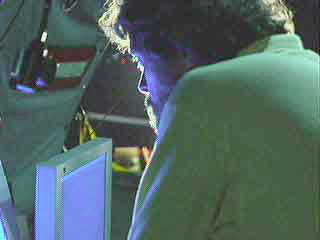|
Leonid MAC |
| home |
| View the shower |
| Mission Brief |
| Science Update |
| Media Brief |
| links |
 David Knight Lynch,
David Knight Lynch, Aerospace Corporation 
Last updated: October 2001
Brief Biographical Information: David K. Lynch is a senior scientist at The Aerospace Corporation where he specializes in infrared astronomy and atmospheric optics. He received a B.S. in Astrophysics in 1969 from Indiana University and a Ph.D. in Astronomy in 1975 from the University of Texas in Austin. He has held faculty or research positions at the California Institute of Technology, Univ. California/Berkeley, Hughes Research Laboratory and The Aerospace Corporation. Dr. Lynch has published over 130 scientific papers and ten books or conferences proceedings. He is a fellow of the Optical Society of America and he has been Principal Investigator on a variety of NSF, NASA, DoD, NOAA and DoE programs. Dr Lynch recently edited CIRRUS, a book devoted entirely to cirrus clouds (Oxford University Press) and wrote (with Bill Livingston of the Kitt Peak National Observatory) the widely-acclaimed book Color and Light in Nature (Cambridghe University Press). Recently he organized the NASA conference Thermal Emission Spectroscopy and Analysis of Dust, Disks and Regoliths, and co-edited of the proceedings (Astronomical Socity of the Pacific) San Francisco (1999). Research Interests:
Mid-Infrared spectroscopy of meteors Related studies of the leonids in November 1998: Lynch D.K., Russell R.W., Sitko M., 1998, "Thermal Infrared Spectroscopy of the Leonid Meteor Parent Body, Comet Tempel-Tuttle". In: Proceedings Leonid Meteoroid Storm and Satellite Threat Conference, AIAA, Manhattan Beach, California, USA (April 1998). I helped install and operate the Aerospace BASS spectrometer. The deployment in the 1998 Leonid MAC was specifically designed to study persistent train emission. No persistent train was observed in our field of view during the mission. The 1999 effort targeted the meteor mid-IR spectroscopy, but no meteor passed the narrow field of view. This year's observing strategy is to enhance the likelyhood of a detection and keep the flexibility to look at persistent trains. |

